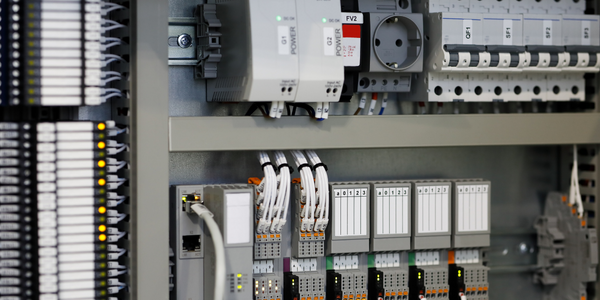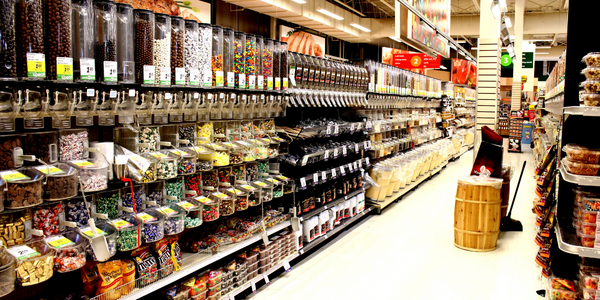Download PDF
Hudson Yards New York: Creating a solution for the future of cities
Technology Category
- Application Infrastructure & Middleware - Data Exchange & Integration
- Application Infrastructure & Middleware - Data Visualization
Applicable Industries
- Retail
Applicable Functions
- Facility Management
- Sales & Marketing
Use Cases
- Building Automation & Control
- Indoor Positioning Systems
Services
- Software Design & Engineering Services
- System Integration
The Challenge
Hudson Yards, a 28-acre neighbourhood and private real-estate development on the West Side of Manhattan, was looking for a wayfinding vendor as part of the development project. The large-scale urban development had many goals in mind to provide space for a wide variety of groups and visitors to intersect. Hudson Yards prides themselves on working towards the future of retail, and interacting and developing as a thought-leader in the industry. This project has created a landmark development in the United States - the first of its kind and the most premium to date. Related envisions the future of living through mixed-use spaces in a mini city. With retail, offices, play, and commerce all happening in one spot at Hudson Yards, they wanted to be an interactive REIT with a focus on expanding the experience within their property rather than the property itself.
About The Customer
A self-described ‘engineered city’, Hudson Yards is a 28-acre neighbourhood and private real-estate development on the West Side of Manhattan. Officially opened in 2019 and containing everything from restaurants and shops to hotels, offices, and residential buildings, the development also contains 14 acres of open public space and a school. Codeveloped by Related Companies and Oxford Property Group, Hudson Yards was imagined as a marriage of digital and physical with an emphasis on the arts and culture in addition to the day-to-day operations. Hudson Yards came to Mappedin through Intersection, a leading technology and media company, and Related, an innovative real estate development firm, as they were looking for a wayfinding vendor as part of the development project. Knowing the scale and size of the property, it was clear that wayfinding across various platforms would be necessary in order to direct an estimated 125,000 daily visitors to and from their various destinations around Hudson Yards.
The Solution
As part of the overall digital solution, Intersection needed a leading wayfinding provider to help round out the visitor experience. Mappedin was the first mapping provider to work with Hudson Yards, a client that wanted a very customizable and interactive solution. Responsive Web App: Fitting into their extensive website, Mappedin’s responsive wayfinding solution for web (Mappedin Web) provides users mapping and navigation on both desktop and mobile devices. Digital Directories: As the project progressed, both the client and their agency decided that digital directories on the property would add to the digital experience available and allow them to better access data of the varied groups who were moving throughout their property. A package of Mappedin’s Web SDK and Intersection’s interactive display software fit perfectly into the structure and plan for Hudson Yards. New Features: The complexities of the development, along with creating a digital map for Hudson Yards that accurately reflected the unique and impressive architecture of their buildings, required getting creative with the proposed solution. This included developing a building-to-building navigation feature, a concept we hadn't fully developed in the past. The complexity challenged us to use our tools in a way we hadn't before, in order to best reflect a digital version of the unique physical space.
Operational Impact
Related Case Studies.

Case Study
Improving Production Line Efficiency with Ethernet Micro RTU Controller
Moxa was asked to provide a connectivity solution for one of the world's leading cosmetics companies. This multinational corporation, with retail presence in 130 countries, 23 global braches, and over 66,000 employees, sought to improve the efficiency of their production process by migrating from manual monitoring to an automatic productivity monitoring system. The production line was being monitored by ABB Real-TPI, a factory information system that offers data collection and analysis to improve plant efficiency. Due to software limitations, the customer needed an OPC server and a corresponding I/O solution to collect data from additional sensor devices for the Real-TPI system. The goal is to enable the factory information system to more thoroughly collect data from every corner of the production line. This will improve its ability to measure Overall Equipment Effectiveness (OEE) and translate into increased production efficiencies. System Requirements • Instant status updates while still consuming minimal bandwidth to relieve strain on limited factory networks • Interoperable with ABB Real-TPI • Small form factor appropriate for deployment where space is scarce • Remote software management and configuration to simplify operations

Case Study
How Sirqul’s IoT Platform is Crafting Carrefour’s New In-Store Experiences
Carrefour Taiwan’s goal is to be completely digital by end of 2018. Out-dated manual methods for analysis and assumptions limited Carrefour’s ability to change the customer experience and were void of real-time decision-making capabilities. Rather than relying solely on sales data, assumptions, and disparate systems, Carrefour Taiwan’s CEO led an initiative to find a connected IoT solution that could give the team the ability to make real-time changes and more informed decisions. Prior to implementing, Carrefour struggled to address their conversion rates and did not have the proper insights into the customer decision-making process nor how to make an immediate impact without losing customer confidence.

Case Study
Digital Retail Security Solutions
Sennco wanted to help its retail customers increase sales and profits by developing an innovative alarm system as opposed to conventional connected alarms that are permanently tethered to display products. These traditional security systems were cumbersome and intrusive to the customer shopping experience. Additionally, they provided no useful data or analytics.

Case Study
Ensures Cold Milk in Your Supermarket
As of 2014, AK-Centralen has over 1,500 Danish supermarkets equipped, and utilizes 16 operators, and is open 24 hours a day, 365 days a year. AK-Centralen needed the ability to monitor the cooling alarms from around the country, 24 hours a day, 365 days a year. Each and every time the door to a milk cooler or a freezer does not close properly, an alarm goes off on a computer screen in a control building in southwestern Odense. This type of alarm will go off approximately 140,000 times per year, equating to roughly 400 alarms in a 24-hour period. Should an alarm go off, then there is only a limited amount of time to act before dairy products or frozen pizza must be disposed of, and this type of waste can quickly start to cost a supermarket a great deal of money.

Case Study
Supermarket Energy Savings
The client had previously deployed a one-meter-per-store monitoring program. Given the manner in which energy consumption changes with external temperature, hour of the day, day of week and month of year, a single meter solution lacked the ability to detect the difference between a true problem and a changing store environment. Most importantly, a single meter solution could never identify root cause of energy consumption changes. This approach never reduced the number of truck-rolls or man-hours required to find and resolve issues.






